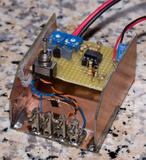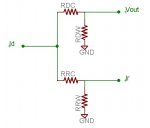I've just finished putting togheter my assembly, results are getting even better than yesterday on a non-ventilated area. Also the 60mW measurements are showing expected results and no major fluctuations are noticed.


if you're planning to build this circuit, don't expect to have it running well on an open-air build. Any even little casual air flow near the sensor (like your open hand moving quicky near it) may cause your results to become unstable, especially on low imput powers. It's strongly reccomended to build at least a little pcb-made box to avoid too much air to impact on the sensor and worsen its stability.
Is there anyone else who can try this circuit on a known-power laser? I'm waiting for my DX200, I'm curious to see if we're getting over-estimated power measurements or it comes how much near to the laser estimated power


if you're planning to build this circuit, don't expect to have it running well on an open-air build. Any even little casual air flow near the sensor (like your open hand moving quicky near it) may cause your results to become unstable, especially on low imput powers. It's strongly reccomended to build at least a little pcb-made box to avoid too much air to impact on the sensor and worsen its stability.
Is there anyone else who can try this circuit on a known-power laser? I'm waiting for my DX200, I'm curious to see if we're getting over-estimated power measurements or it comes how much near to the laser estimated power







